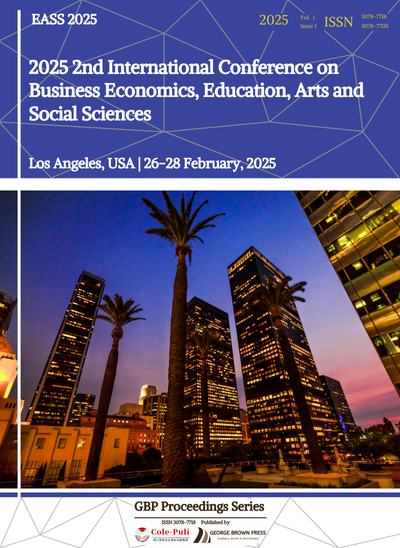Study on the Effect of China's Financial Conditions Index on Monetary Policy Mechanism
DOI:
https://doi.org/10.71222/hkpb5k85Keywords:
monetary policy, financial conditions index, empirical analysis, transmission mechanism, economic regulationAbstract
This study examines the role and impact of the financial conditions index (FCI) in the transmission of monetary policy within China’s financial market. By analyzing the theoretical foundations and construction methods of the FCI in both domestic and international contexts, and incorporating classical models of monetary policy transmission, this research establishes an analytical framework suited to China’s economic environment. Through empirical analysis, it investigates how the FCI influences the effectiveness of monetary policy, highlighting its varying effects across different regions and time periods, as well as its implications for economic regulation. The findings suggest that the FCI not only reflects the transmission effects of monetary policy but also helps identify structural issues in policy implementation. Based on these insights, the study proposes policy recommendations aimed at optimizing the monetary policy toolkit and strengthening financial market monitoring, ultimately enhancing the effectiveness of monetary policy execution in China while providing both theoretical and practical guidance.
References
1. H. Wang, et al. , "The dynamic impact of monetary policy on financial stability in China after crises," Pacific-Basin Finance J., vol. 75, p. 101855, 2022, doi: 10.1016/j.pacfin.2022.101855.
2. Z. Li and J. Zhong, "Impact of economic policy uncertainty shocks on China's financial conditions," Finance Res. Lett., vol. 35, p. 101303, 2020, doi: 10.1016/j.frl.2019.101303.
3. H. Li, et al., "Monetary policy and its transmission channels: Evidence from China," Pacific-Basin Finance J., vol. 68, p. 101621, 2021, doi: 10.1016/j.pacfin.2021.101621.
4. C. Deng, X. Zhao, and M. Xu, "Financial cycle and the effect of monetary policy," Finance Res. Lett., vol. 47, p. 102570, 2022, doi: 10.1016/j.frl.2021.102570.
5. X. Wei and L. Han, "The impact of COVID-19 pandemic on transmission of monetary policy to financial markets," Int. Rev. Financial Anal., vol. 74, p. 101705, 2021, doi: 10.1016/j.irfa.2021.101705.
6. C. Yang, L. Chen, and B. Mo, "The spillover effect of international monetary policy on China’s financial market," Quant. Finance Econ., vol. 7, no. 4, pp. 508-537, 2023, doi: 10.3934/QFE.2023026.
7. Y. Feng, et al. , "Time-varying impact of US financial conditions on China's inflation: A perspective of different types of events," Quant. Finance Econ., vol. 5, no. 4, pp. 604-622, 2021, doi: 10.3934_QFE.2021027.
8. Y. Xu, et al., "How do the dual effects of financial development change the transmission of monetary policy? – Evidence from China," North Am. J. Econ. Finance, vol. 68, p. 101952, 2023, doi: 10.1016/j.najef.2023.101952.
9. M. Zhang, et al., "Three channels of monetary policy international transmission: Identifying spillover effects from the US to China," Res. Int. Bus. Finance, vol. 61, p. 101670, 2022, doi: 10.1016/j.ribaf.2022.101670.
10. L. Li, Y. Tang, and J. Xiang, "Measuring China's monetary policy uncertainty and its impact on the real economy," Emerg. Markets Rev., vol. 44, p. 100714, 2020, doi: 10.1016/j.ememar.2020.100714.










